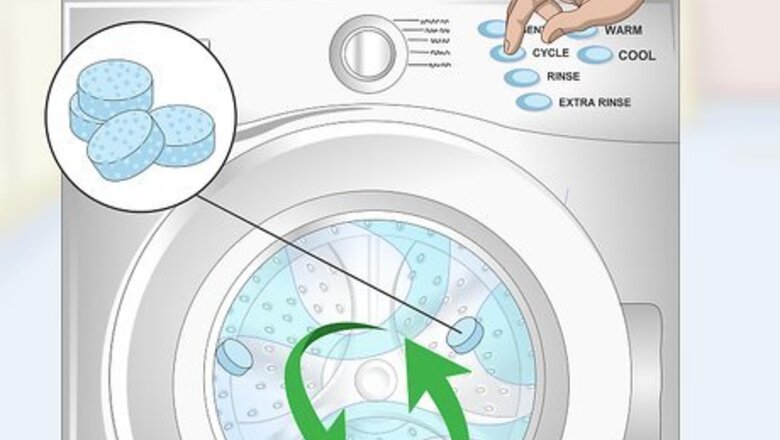
views
Disconnecting the Washer
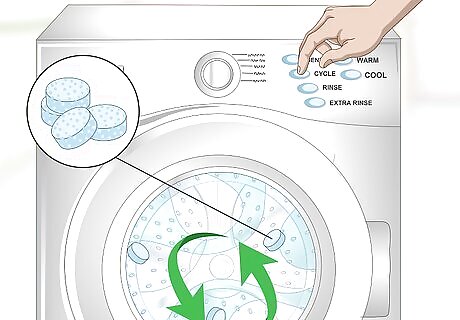
Run a cleaning cycle. A couple days before you are moving, use a washer cleaner pack to clean out the washer. Basically, you just drop the pack in and run the washer. Leave the lid open afterwards to dry it out. You can also run a cleaning cycle without soap if your washing machine has that option.

Drain the water from the washing machine and drain hose. Find the water supply valve, likely behind the washing machine, and turn it clockwise to shut it off. Disconnect the hose from the drain, and place a bucket underneath it. Turn on a warm cycle for the machine, letting it run for 30 seconds, and then switch it to spin.
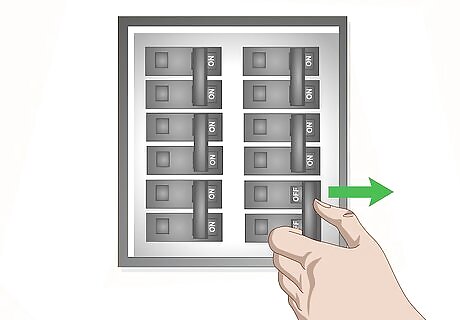
Shut off the electricity. Flip the breaker at the breaker box to turn off the electricity to your washer. You don't want to mess with electricity while you're finishing up the disconnection process.
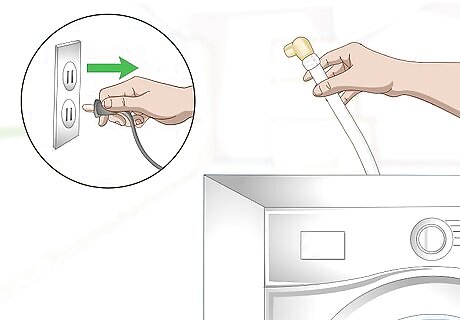
Disconnect the hoses and unplug the washer. Look for the water supply hoses. Your machine may have 1 or 2, depending on whether the water is heated in the machine or not. Use slip-joint pliers to detach the hoses from the water, letting the water drain in the bucket. Detach the hoses from the machine, and unplug the washer from the electricity. Put the hoses in a bag that you can seal up. The drain hose will stay attached to the machine. Tie it to the machine with rope or hold it on with plastic stretch wrap.
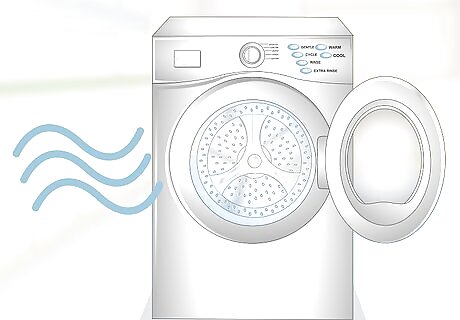
Let the washer dry out. Once you have everything disconnected, let the washer dry out so you're not moving it with moisture in it. Leave the door open for a full day to make sure it dries out. You can also wipe out the inside of the machine with a cloth.
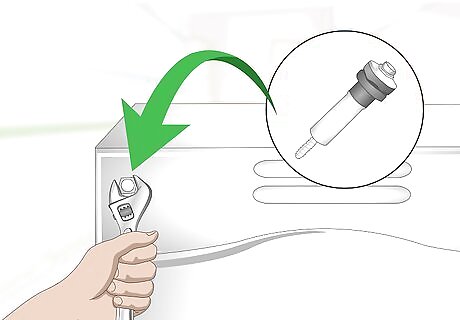
Secure the washer. Check your manual for how your washer is secured for moving. Generally, you tighten the tub's screws in top-loading washers, or use bolts at the back of the machine for front-loading washers.
Disconnecting the Dryer
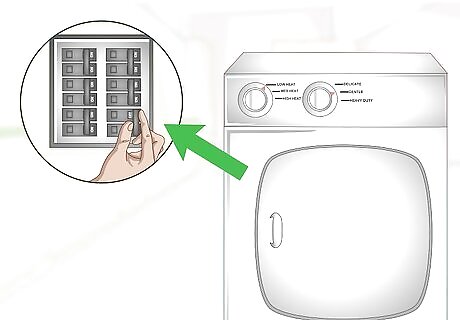
Turn off the gas or electricity. If your dryer is electric, flip the breaker at the breaker box to shut off the electricity to the machine. If you have a gas dryer, turn the valve behind the dryer to shut the gas off.
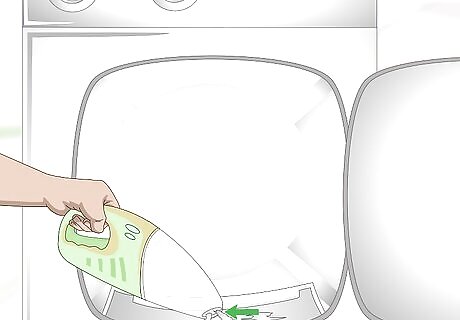
Vacuum the dryer lint trap. While this step isn't completely necessary for moving, it's a step you should take anyway. Vacuuming the dryer lint trap helps prevent the buildup of lint, which can cause fires.
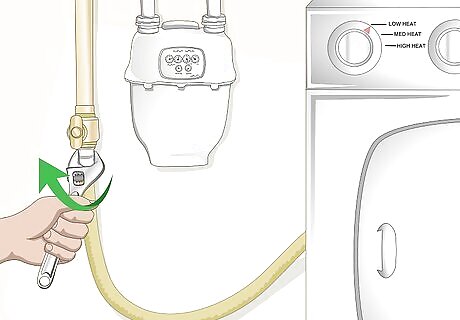
Disconnect the dryer from the gas for a gas dryer. If you don't know what you're doing with gas, you should call a professional. Use a wrench to unscrew the gas line from the wall. Wrap up the hose, and place it in the dryer. Look and listen for signs of a gas leak as you work. You'll smell rotten eggs. You may hear a hissing sound, or see dust being blown into the air. If you notice a sign of a gas leak, leave the area. Call 911 and your gas company.
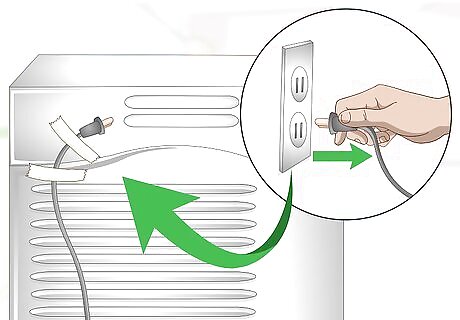
Unplug the dryer. An electric dryer is easier because all you need to do is unplug it. Tape the cord up to the back of the machine to make it easier to move.
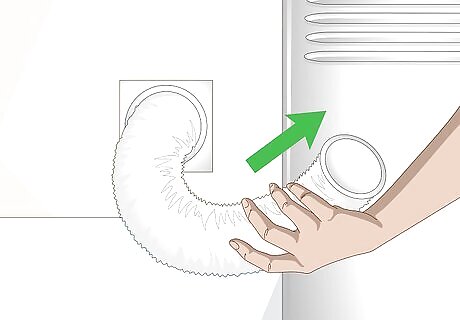
Detach the hose. Detach the hose from both the wall and the dryer. Put it in a bag you can seal. Stash it inside the dryer for safe keeping while you move the dryer to its new location. If the hose has a lot of lint in it, you may want to just buy a new hose for your next house.
Moving the Washer and Dryer to Your New Home

Wrap the each machine for moving. Wrap plastic wrap around the main part of the machine and over the door to keep it from opening. Tape a moving blanket or several very large pieces of bubble wrap around the machine to protect it.
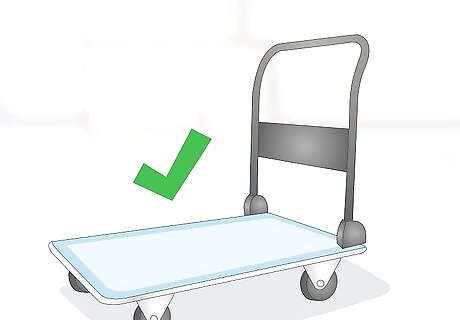
Rent or buy an appliance utility cart. Moving appliances requires a wider base than a typical hand truck can manage. An appliance utility cart is a better idea, which you can find at places that rent moving equipment. You can also buy one from a home improvement store.
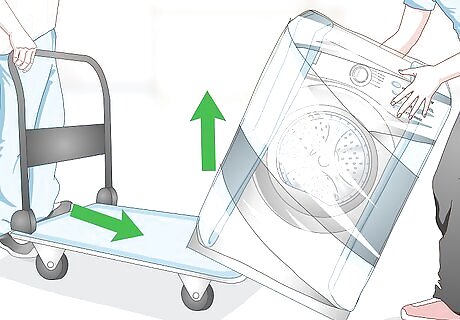
Lift one edge of the machine to get the cart under it. With the help of friends, lift one side of the appliance enough to get the cart underneath the edge. Strap the machine to the dolly for the move.
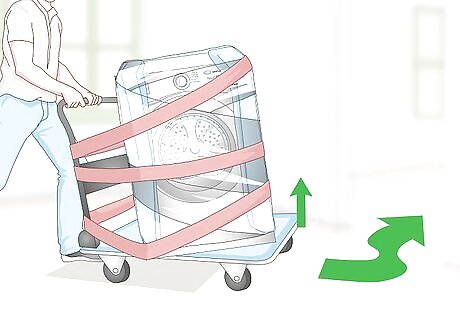
Move the dolly. Tip the appliance cart back slightly so that you can move it. You'll likely need your friends' help here, too. Carefully maneuver it through the house. Try to go straight through doorways instead of at an angle to keep from scratching the doorway or the machine.

Lower the appliance down stairs with a spotter underneath. With someone on the other side, move the appliance down the stairs one step at a time. One person should be underneath the dolly on the stairs, and you should be holding the dolly from the top, moving it down the stairs. For going up stairs, pull the appliance up behind you step by step. You should still have a spotter underneath who helps you lift the appliance on each step.
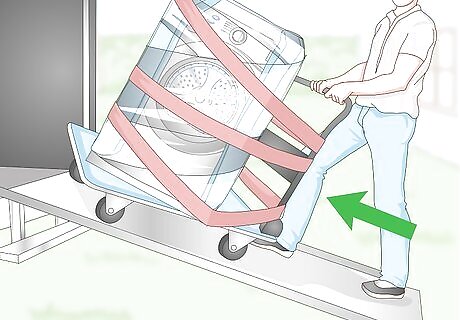
Place the machine on the truck. It's easiest to move it up a ramp if possible. If not, you'll need several people to lift it into the truck. Lift with your knees. To prevent injury, don't bend your back as you lift. Appliances should go closest to the cab of the truck.
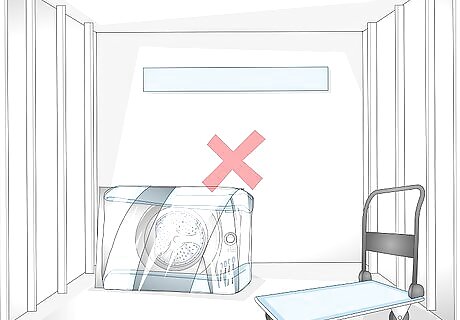
Do not lay your washer on its side. While it's tempting to fit your washer in the moving truck any way you can, laying a washer on its side isn't a good idea. It can cause it to get off balance later.
Setting Up Your Washer and Dryer in Your New Place
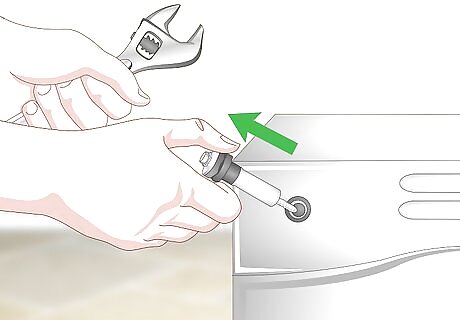
Remove the shipping bolts from the washer. Take off the bolts you used to secure the washer before moving. You may need to unscrew them inside the machine or from the back.
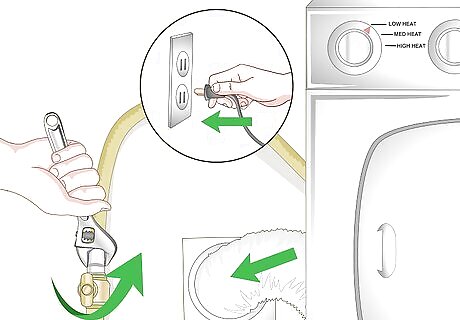
Attach the dryer's connections. With the gas line off, hook up the gas line if you have a gas dryer. Attach the exhaust hose to the exhaust pipe, and screw it in. Make sure the hose is tight on the dryer, as well. Plug in the electrical cord. Turn on the gas at the wall. Be on the lookout for a gas leak. You might hear a hissing sound, or you may see the gas blowing things around. Sniff the air for rotten eggs. If you think there's a leak, call 911 and the gas company.
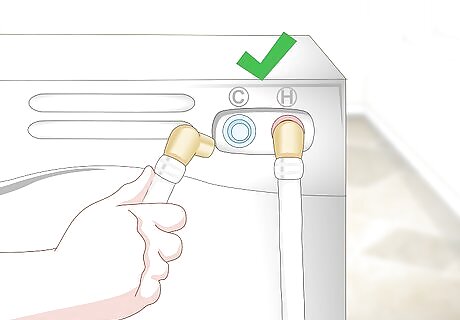
Connect the washer's hoses. Connect the water hoses to the washer and to the wall ports. Look for "C" for cold and "H" for hot to make sure you get them in the right places. The drain hose should still be attached to the machine. Thread the other end into the receiver in the wall. Plug the washer in. Turn the water valves on at the wall. Check to make sure you don't have a water leak.
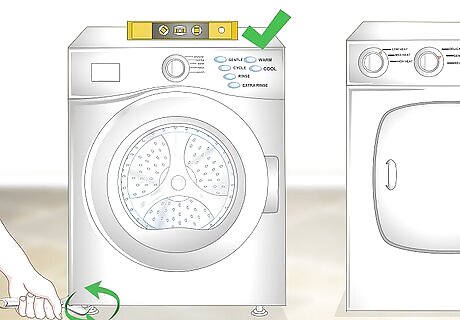
Level the washing machine. Unscrew the locking nut on the feet. Lift up the edge slightly. Adjust the feet by turning them to go up or down. You may need a wrench to help you adjust them. Use a level to check if you've adjusted the feet enough to make the machine level.















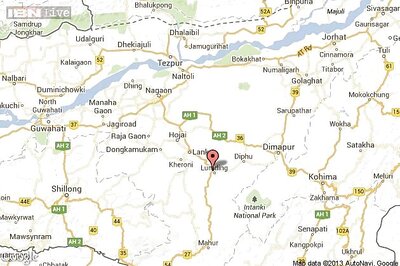
Comments
0 comment